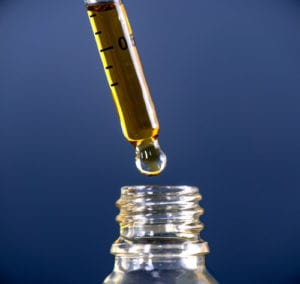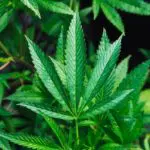Know what to ask for at the cannabis dispensary
One of the largest barriers people face when they are new to the cannabis dispensary is knowing what to ask for and how to ask for it. Anyone who’s taken their maiden voyage to the dispensary can tell you that it can be overwhelming. By understanding how products are categorized, consumed, and talked about you’ll be better prepared and more likely to find the right product for your specific needs.
Initially, it’s important to understand that cannabis can be used in a variety of ways. It can be eaten, sipped, smoked, vaporized, or rubbed into the skin. Cannabis products are developed to fit into one of these categories. Before you choose any cannabis product, you should know some basic cannabis facts and also decide how you want to consume it. An explanation of these commonly used cannabis terms will provide a basic foundation to start from.
- Indica and Sativa
- Terpenes
- Flower
- Edibles
- Cannabis Oil
- Vape Cartridges
- Tinctures
- Topicals
 Indica and Sativa
Indica and Sativa
Cannabis cultivation and consumption dates back thousands of years and can be found in the written record of the first civilizations. These original cannabis strains were the genesis of modern-day indica and sativa. Indica, known for its pain relieving, sleep-inducing properties is known to produce a whole body high — one that puts you “in-da-couch,” colloquially speaking. Indica strains provide a much different experience than sativa strains, which by contrast are known to promote creativity, focus, and motivation. Meticulous thought is invested in the breeding of strains that will produce highly-specific outcomes and intense terpene profiles. Furthermore, strains with both indica and sativa parentage are commonly referred to as hybrids. Many consumers enjoy hybrid strains for their ability to offer benefits from both lineages.
What the hey is a terpene?
The cannabis plant produces hundreds of aromatic compounds known as terpenes. Unlike cannabinoids, terpenes are not unique to the cannabis plant; for instance, a popular cannabis terpene is limonene. Limonene is found in — you guessed it — lemons and other citrus fruits, and is often found in sativa and sativa-dominant strains.
The cannabis plant develops terpenes to protect itself from being eaten by pests and to attract pollinators. The unintended byproduct of this evolutionary defense mechanism includes a host of health benefits for human beings as well. Cannabis pioneers understand the benefit of terpenes, particularly when consumed in combination with cannabinoids. Some brands formulate their products by isolating each terpene and reintroducing it back into their products, while others preserve the naturally-occurring terpene profile of a particular strain. Either way, these flavorful products are created for the benefit and enjoyment of their customers.
Flower is the manicured marijuana bud
Displayed in clear jars at your local dispensary, the dried marijuana bud is intended for smoking or vaping in a dry herb vaporizer. It comes from the female cannabis plant and contains higher levels of THC than hemp, anywhere from 0.3% to upwards of 30% . You’ll find a selection of different strain names: OG Kush, Blue Dream, Mendo Breath, among many others. The label of your product will indicate the strain, whether it is an indica, sativa, or hybrid, and the total percentage of cannabinoids.
Edibles come in many forms
A cannabis dispensary will have a wide variety of edible cannabis options for those who prefer not to smoke. Edibles often present themselves as cannabis-infused candies, gummies, mints, or baked goods. These tasty treasures are available in a range of doses and cannabinoid ratios. In addition, some edibles contain low doses of THC (a low dose is considered 1 to 3 milligrams of THC), making these options great for micro-dosing — a strategy of using small doses consistently to achieve certain mental and physical benefits without feeling “high.”
Cannabis oil concentrates
Cannabis oil is available for vaping, eating, and using topically. It’s a concentrated formulation derived from an extraction process that separates the compounds from the plant material. The important thing to look for is an oil derived from Co2 extraction, not one that’s been manufactured with dangerous solvents, i.e., butane. At most cannabis dispensaries a selection of vape cartridges, disposable vape pens, tinctures, and topical balms made from cannabis oil extract occupy the retail space.
Vape carts and pens
Vape cartridges hold .5G or 1G of concentrated cannabis oils which are meant to be used with a 510 battery (atomizer). These cartridges come in a variety of formulations. Some formulations boast the benefits of compound isolation, while others promote the advantages of whole-plant and live resin formulation. All of them are highly concentrated cannabis that may or may not be formulated with the consumer’s health in mind. Disposable vape pens are an alternative to to the vaporizer cart and battery set up. They allow the consumer to try vaping without commitment.
Tinctures do double duty
Tinctures are formulated with cannabis oil and a base which is often made of coconut oil. They’re packaged in 15ml and 30ml dropper bottles and come in a variety of formulas that are labeled for precise dosing. The great thing about tinctures is that they are both an edible and a topical, meaning you can eat it and rub it into your skin for pain relief making them one of the most versatile cannabis products available.
Topicals for pain relief
Topical cannabis products “topicals” come in many forms. There are balms, oils, lotions, and sprays that are meant to be applied to the skin and rubbed into the affected area to reduce inflammation and relieve pain. Just like any other cannabis product, topicals are formulated with customized compound ratios that can contain terpene profiles and specific cannabinoids (cannabis compounds) to achieve certain therapeutic results.
The one thing that all of these terms have in common is science. Cannabis science has evolved in such a way that a cannabis dispensary glossary is becoming necessary to navigate the cannabis product landscape. Understanding how to communicate what you need from the dispensary staff is key to getting the right products for your specific condition or desired experience.
Knowing the difference between Indica and Sativa could significantly change your outcome. Deciding how you want to consume your cannabis also plays a large role in your overall experience. All of these things start with a conversation. As your cannabis vocabulary grows, so will your curiosity to learn more and the cannabis industry won’t disappoint you. There are terms like shatter, kief, and wax that one can pursue when comfortable with the basic language of the recreational cannabis dispensary.



